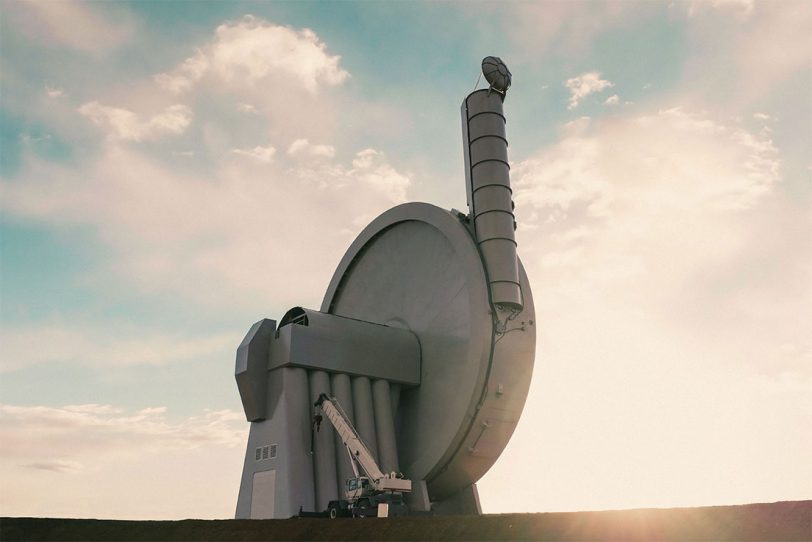NASA has agreed to test a new way of getting things into space—by spinning them really fast and throwing them straight up from the ground.
A strange structure resembling a huge yo-yo with a small smokestack can be seen rising out of the desert floor to the east on the long, desolate road between Las Cruces, New Mexico, and the main terminal of Spaceport America over an hour to the north.
However, the spinning that takes place at this facility run by California-based SpinLaunch takes place on the inside of what is actually a steel vacuum chamber 300 feet (91 meters) in diameter. A payload attached to an internal carbon fiber arm is spun up to 5,000 miles per hour (8,000 kilometers per hour) before being released and fired into space from the stack.
In October, the company completed its first public test of its suborbital mass accelerator, and now NASA has agreed to test the massive centrifugal slingshot later this year.
The space agency has contracted with SpinLaunch to launch and recover a payload as part of a developmental test flight that could lead to future launches.
“What started as an innovative idea to make space more accessible has materialized into a technically mature and game-changing approach to launch,” founder and CEO Jonathan Yaney said in a statement last week.
SpinLaunch was founded in 2014 to create an alternative to conventional rockets for reaching beyond Earth’s atmosphere, which Yaney claims can be accomplished with less than 30% of the fuel and structures of a typical launch.
In case you’re wondering, no, SpinLaunch will never be used to launch astronauts; the company’s target market is less expensive and more readily available launches of small satellites.
The New Mexico suborbital accelerator is only the beginning. The company also intends to construct a coastal orbital launch facility. A payload would be launched into orbit from a facility three times the size of the one in New Mexico. Once in the upper atmosphere, a small rocket engine would be ignited to provide the extra thrust required for orbital insertion.
The company hopes to perform its first orbital test flight as early as 2025.






Hello, this is a new and amazing innovative way to launch satellites.
This is much better in terms of cost, safety and environmental security compared to that of the traditional method.
But I have a concern about acceleration during the spin phase which can damage the stronguest satellite.
Please explain how this is taken into account?
Best Regrds